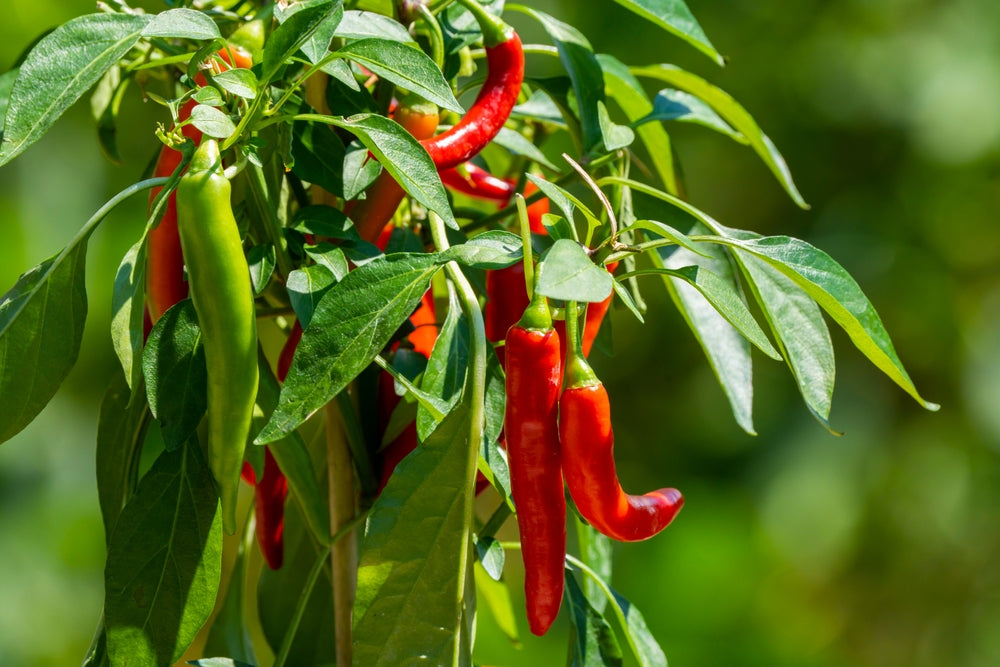Have you ever thought about how satisfying it would be to harvest fresh onions from your own garden? According to the National Gardening Association, home gardening has seen a significant increase, with over 35% of households now growing vegetables at home (source: National Gardening Association). Onions are one of the most versatile vegetables you can grow, adding flavor to countless dishes and offering numerous health benefits.
Buy Onion Seeds
Whether you're new to gardening or an experienced gardener, growing onions in your garden is both rewarding and easy. With a little planning and care, you can enjoy a bountiful harvest of fresh onions right from your backyard. Onions are relatively simple to cultivate and can thrive in various climates, making them an excellent choice for anyone interested in starting a garden.
In this blog, we will explore how to choose the right onion varieties, prepare your garden, plant onions, care for your plants, and harvest and store your onions for the best results.
• Choosing the Right Onion Varieties

Selecting the right onion varieties is crucial for successful home gardening. Onions come in different types: short-day, long-day, and intermediate-day. Each type has specific requirements and is best suited for different regions. Below is a table to help you choose the best onion varieties for your home garden:
| Onion Variety | Best For | Day Length Requirement | Characteristics |
| Red Creole | Southern regions | 10-12 hours | Red color, spicy flavor, stores well |
| Texas Super Sweet | Southern regions | 10-12 hours | Sweet flavor, large size, good for fresh eating |
| Walla Walla | Northern regions | 14-16 hours | Sweet flavor, large size, best for fresh use |
| Yellow Sweet Spanish | Northern regions | 14-16 hours | Mild flavor, good for storage |
| Candy | Various climates | 12-14 hours | Sweet flavor, good for fresh usage and storage |
| Crystal Wax White Bermuda | Various climates | 12-14 hours | Mild flavor, good for fresh use |
• Planting Onion Bulbs or Seeds: A Step-by-Step Guide
1. Prepare the Soil

Onions prefer well-drained, fertile soil with a pH between 6.0 and 7.0. Before planting, add compost or well-rotted manure to enrich the soil.
2. Planting Depth
Plant your onion bulbs or seeds about 1 inch deep and 4-6 inches apart. Ensure the pointed end of the bulbs is facing up as it will need that open space to grow upwards. The seeds must also be placed at a distance so that the plants do not have to fight for space when they begin to grow.
3. Spacing Rows
To ensure enough space for your onion plants, space out the bulbs or onion seeds about 12-18 inches apart to allow enough room for them to grow.
4. Watering

After planting, water your onion plants thoroughly. Keep the soil consistently moist but not waterlogged and ensure that you do not overwater as this can easily lead to bulb rot, or can suffocate your seeds and seedlings. If growing them outdoors, you can use a shower-head watering wand or can or even a pipe to water.
5. Mulching
Apply a layer of mulch to retain moisture and suppress weeds. You can use leaf mulch or even compost to ensure moisture retention.
• Caring for Your Onion Plants
Proper care is essential to ensure healthy growth and a bountiful harvest of onions. Here are some key points to remember:
1. Watering
Onions need about 1 inch of water per week. Water deeply but infrequently to encourage deep root growth. Reduce watering as the onions mature to allow the bulbs to dry out.
2. Weeding

Keep the area around your onion plants weed-free. Weeds compete for nutrients and water, which can affect onion growth. Mulch around the plants to suppress weeds and retain moisture.
Buy Single Prong Weeder
3. Fertilizing
Use a balanced fertilizer every few weeks to promote healthy growth. Avoid over-fertilizing, as it can lead to excessive leaf growth and smaller bulbs. Consider using compost or organic fertilizers for better soil health.
4. Pest Control

Watch for common pests like onion maggots and thrips. Use organic insecticides or natural predators to manage pest infestations. Ensure good air circulation to reduce the risk of fungal diseases.
Buy Organic Pest Control
5. Monitoring
Regularly check your onion plants for signs of disease or nutrient deficiencies. Yellowing leaves or stunted growth may indicate a problem. Address issues promptly to prevent them from spreading. By following these guidelines, you can ensure your onion plants thrive and produce a plentiful harvest in your home garden.
• Harvesting and Storing Your Onions

When the onion tops begin to yellow and fall over, it’s time to harvest. Gently pull the onions from the ground and let them dry in the sun for a few days. After the outer skins have dried, move them to a cool, dry place to cure for a few weeks. Proper curing helps extend the storage life of your onions.
Once cured, trim the tops and roots and store the onions in a cool, dry, and well-ventilated area. Mesh bags or baskets work well for storage, allowing air circulation to prevent rot.
Growing onions in your home garden is a fulfilling and practical way to enhance your meals with fresh, flavorful ingredients. Onions are relatively simple to cultivate and can thrive in various climates, making them an excellent choice for both novice and experienced gardeners. By carefully selecting the right onion varieties, preparing your garden, and following proper planting and care techniques, you can enjoy a bountiful harvest of delicious onions. Additionally, harvesting and storing your onions correctly will ensure they last for months, providing you with a continuous supply of this versatile vegetable.
You can also choose to grow plants by seeds and bulbs, creating a whole kitchen garden for yourself and your loved ones. This will bring you farm-fresh, reliable produce right in the comfort of your home!
Happy gardening!













